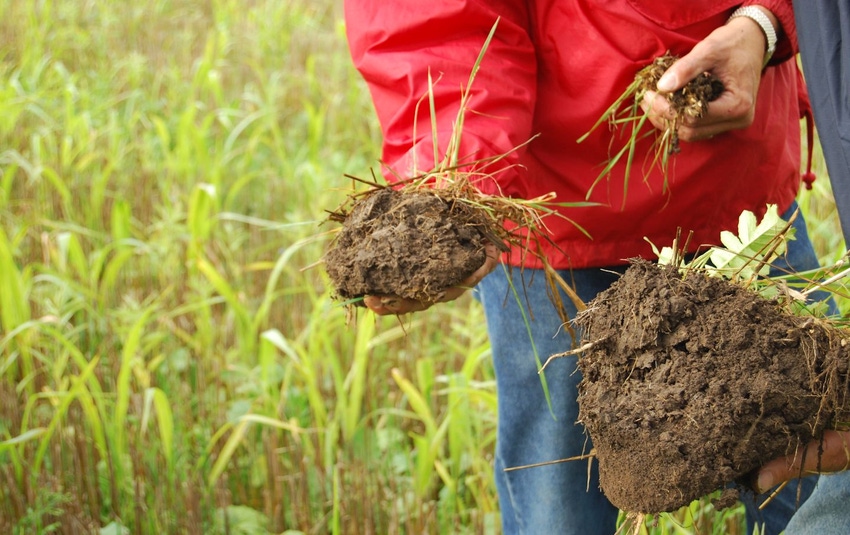
No-till is just the first step on the journey to healthier soils. It also takes a diverse mix of cover crops to feed the thousands of living organisms within the soil and to increase their populations, according to Jerry Hatfield, a plant physiologist and lab director from Ames, Iowa. Hatfield, director of the USDA National Laboratory for Agriculture and the Environment, spoke to farmers recently in Hallam on how to capture the full potential of no-till crop production.

Hatfield puts the economic value of a healthy soil, based on research and farmer experience, at 10 to 20 more bushels of corn per acre over tilled fields by improving water availability and nutrient capacity in the soil. Increasing the soil biology will increase the organic matter. But it won't happen overnight, he says. "The soil is very complex. And it takes management to achieve these benefits."

A STEP FURTHER: Jerry Hatfield says no-till is just the first step on the journey to healthier soils; soils need a diverse mix of cover crops to feed the thousands of living organisms working beneath the surface and to increase their populations.
A STEP FURTHER: Jerry Hatfield says no-till is just the first step on the journey to healthier soils; soils need a diverse mix of cover crops to feed the thousands of living organisms working beneath the surface and to increase their populations.
Hatfield perked up the farmers in attendance by telling them to image looking out the kitchen window and seeing 320 elephants on a quarter section. That's two elephants totaling 10,000 pounds per acre, which he says is equivalent to the weight of the living organisms working in the soil, fostered by no-till and cover crops.
In a robust soil are microorganisms like bacteria, mycorrhizal fungi, protozoa and nematodes, plus plant roots, nutrients, earthworms, insects and other critters.
Soil scientists frequently refer to soil aggregate stability. Soil aggregates are groups of soil particles that bind to each other more strongly that adjacent particles. With tillage, the soils are dense with little aggregate stability. On the other hand, stable aggregates produce a large range in pore space which is needed for air and water entry into the soil and for movement of air, water and nutrients.
Cover crops, preferably a diverse mixture, keep roots within the soil after the primary crop is harvested, improving organic matter and soil aggregate stability. According to Hatfield, aggregate stability falls of quickly in soils that are tilled.
Other benefits of cover crops, depending on the mixture, are nitrogen fixation, water infiltration, and erosion control. Cover crops such as rye and turnips also provide grazing for livestock.
"While we can't change the amount of precipitation that falls, we can alter soil water availability if we reduce evapotranspiration," Hatfield says. "That will be beneficial during the grain-fill period. A good soil means a good yield."
Considering that current warming trends will increase variability, no-till crop production can improve the capability of the soil to moderate the impact of temperature and improve water efficiencies, he adds.
Hatfield referred to the 2015 National Corn Yield Contest winners. "All the winners last year were under some form of no-till production."
McCabe writes from Lincoln.
About the Author(s)
You May Also Like






